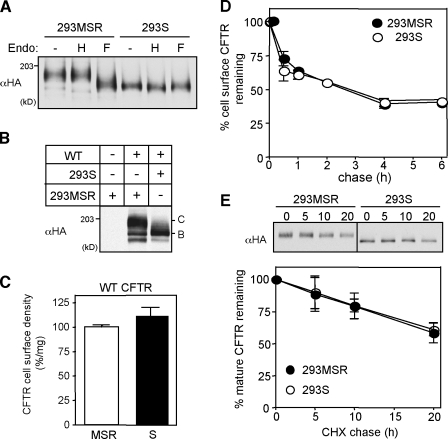Figure 5.
Core glycosylation is sufficient for the folding and stability of CFTR. (A) Endo H (H) and PNGase F (F) sensitivity of wt CFTR in HEK293S cells was assessed by immunoblotting with anti-HA Ab after the incubation of cell lysates for 3 h at 33°C. HEK293MSR cells were used as control. Steady-state level (B) and cell surface density (C) of wt CFTR in HEK293S cells (n = 3). (D) Cell surface stability of wt CFTR in HEK293S cells was measured by anti-HA–binding assay (n = 3). MSR and S indicate HEK293MSR and HEK293S cells, respectively. C and B indicate complex-glycosylated CFTR and core-glycosylated CFTR, respectively. (E) Turnover rates of the mature complex-glycosylated CFTR and core-glycosylated CFTR in HEK293MSR and HEK293S cells, respectively. Metabolic turnover of CFTR was measured by CHX chase after an initial CHX treatment (3 h) to eliminate the ER resident folding intermediates (n = 3). Error bars indicate mean ± SEM.

